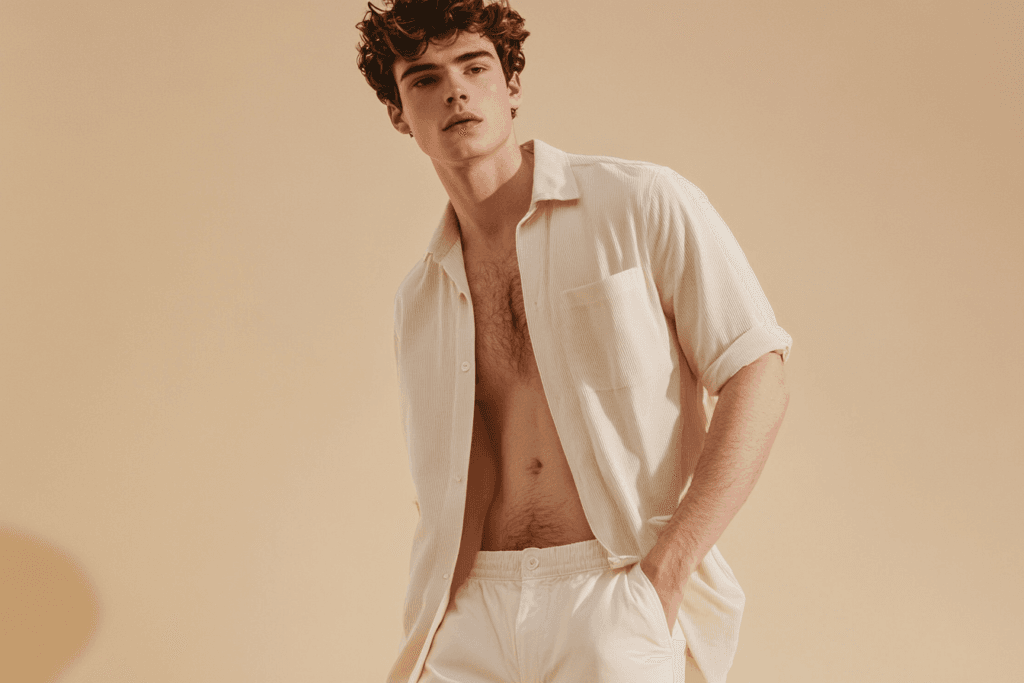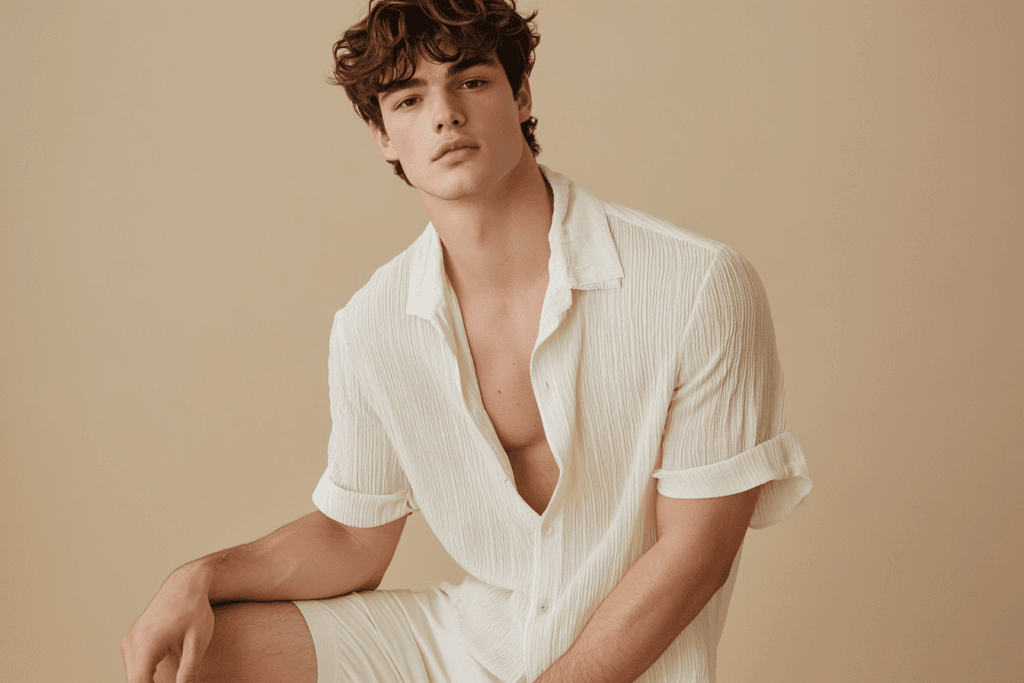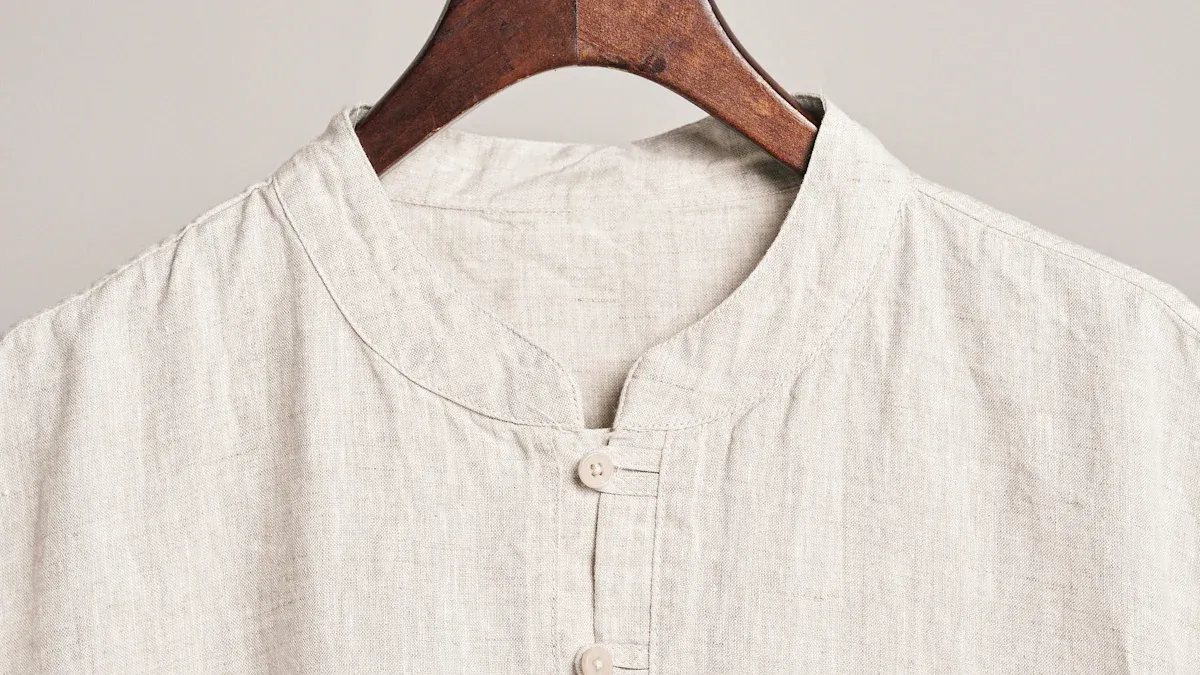
Have you ever felt sticky and uncomfortable in your favorite shirt on a hot day?
That’s where breathable fabric comes to the rescue! These fabrics let air flow around your skin, helping you stay cool and fresh. They also release heat and wick away moisture, making them perfect for warm weather. Popular choices like cotton, linen, and blends are not only stylish but also practical for easing the discomfort of heat.
Whether it’s summer or winter, breathable materials keep you feeling great all day long.
Key Takeaways
- Fabrics like cotton, linen, and rayon help you stay cool. They let air pass through and release sweat in hot weather.
- Think about your weather and activities when picking fabrics. Light fabrics are great for heat, while blends last longer and feel comfy.
- Try the ‘light test’ to see if fabric breathes well. If light shines through easily, it’s good for warm days.
What’s the Key Factor to Consider for Choosing Breathable Fabric
Comfort and softness for daily wear
When it comes to daily wear, comfort is king. You want fabrics that feel soft against your skin and allow air to circulate freely. Natural options like cotton, linen, and bamboo are excellent choices. They’re breathable, wick away sweat, and keep you cool throughout the day. Cotton, in particular, stands out for its absorbent and non-clingy nature. Plus, it’s biodegradable, making it a sustainable pick for your wardrobe.
Tip: If you’re looking for something ultra-soft, try shirts made from bamboo or cotton blends. They combine comfort with durability for everyday use.
Durability and longevity for a lasting wardrobe
A good shirt isn’t just about comfort—it should last, too. Breathable fabrics like cotton and polyester blends are known for their durability. Cotton, while biodegradable, can be enhanced with modern textile technology to improve its lifespan. Here’s a quick look at how different fabrics hold up over time:
| Evidence Type | Description |
|---|---|
| Biodegradability | Cotton breaks down faster than synthetics, with over 60% biodegradation in aquatic environments after 100 days. |
| Durability Enhancements | Advances in textile technology improve cotton’s durability through sustainable processes. |
Seasonal needs: Warm weather vs. cooler climates
Your choice of breathable fabric should match the season. For hot summers, lightweight options like linen and rayon are perfect. They’re airy and help you stay cool. In cooler climates, cotton or cotton-polyester blends work well. They provide breathability while offering a bit more warmth.
Note: Fabrics with a tighter weave, like twill, are better for cooler weather, while looser weaves, like plain or porous fabrics, excel in the heat.
Maintenance and care for different fabrics
Caring for your shirts properly ensures they stay in great shape. Different breathable fabrics have unique care requirements. Here’s a handy guide:
| Fabric Type | Care Tips |
|---|---|
| Cotton | Machine wash in warm water; use delicate cycles for embellished items. |
| Silk | Dry clean or hand wash with mild detergent for delicate care. |
| Wool | Hand wash or dry clean; avoid high heat to prevent shrinking. |
| Polyester | Machine washable; tumble dry on low; iron at low temperatures if needed. |
| Cotton-Polyester Blend | Machine wash in warm water; tumble dry on low; resists wrinkling. |
By choosing the right breathable fabric and following these care tips, you’ll enjoy a wardrobe that’s both comfortable and long-lasting.

What’s the Best Breathable Fabrics for Shirts
Cotton: The versatile classic
Cotton is a timeless favorite when it comes to breathable fabric. It’s soft, lightweight, and perfect for everyday wear. You’ll love how it absorbs moisture and keeps you feeling fresh, even on the hottest days. Cotton shirts are also incredibly versatile, making them suitable for casual outings, office wear, or even lounging at home.
One of the best things about cotton is its durability. It holds up well to frequent washing and doesn’t lose its softness over time. Plus, it’s a natural fiber, which means it’s biodegradable and eco-friendly. If you’re looking for a fabric that combines comfort, breathability, and sustainability, cotton is a fantastic choice.
Tip: For added stretch and comfort, try cotton-spandex blends. They’re great for activewear and casual shirts.
Linen: Lightweight and perfect for summer
When the temperature soars, linen becomes your best friend. This fabric is known for its airy, lightweight feel, making it ideal for summer shirts. Linen allows air to circulate freely, keeping you cool and comfortable even in humid weather. Its natural texture adds a touch of sophistication to your wardrobe, whether you’re heading to a beach party or a casual brunch.
Linen does wrinkle easily, but that’s part of its charm. Those creases give it a relaxed, lived-in look that’s perfect for laid-back summer vibes. If you want a breathable fabric that screams summer, linen is the way to go.
Note: Pair linen with cotton for a softer feel and added durability. This blend works wonders for summer clothing.
Rayon: A semi-synthetic breathable option
Rayon is a unique fabric that combines the best of both worlds. It’s made from natural cellulose fibers but processed synthetically, giving it a silky texture and excellent breathability. You’ll appreciate how rayon drapes beautifully, making it a popular choice for blouses, dresses, and formal shirts.
This fabric is lightweight and feels cool against your skin, which makes it perfect for warm weather. However, rayon requires a bit more care. It’s best to hand wash or use a gentle cycle to maintain its softness and shape. If you’re looking for a breathable fabric with a touch of elegance, rayon is worth considering.
Polyester: Modern, moisture-wicking, and durable
Polyester has come a long way from its early days. Today, it’s a high-performance fabric that’s perfect for activewear and everyday shirts. One of its standout features is its moisture-wicking ability. Polyester pulls sweat away from your skin, keeping you dry and comfortable during workouts or hot days.
Here’s why polyester is a modern favorite:
- It resists wrinkles, making it ideal for travel or busy lifestyles.
- It’s highly durable and can withstand frequent washing without losing its shape.
- Advanced polyester textiles now offer better moisture management and temperature regulation.
If you’re looking for a breathable fabric that’s low-maintenance and long-lasting, polyester is a great option.
Fabric blends: Combining natural and synthetic benefits
Fabric blends give you the best of both worlds by combining the strengths of natural and synthetic fibers. For example, cotton-polyester blends offer the softness of cotton with the durability of polyester. These blends are wrinkle-resistant and perfect for shirts that need to look polished all day.
Here’s a quick guide to popular fabric blends and their advantages:
| Fabric Blend | Key Advantages | Common Applications |
|---|---|---|
| Cotton-Polyester | Wrinkle resistance, durability | T-shirts, shirts, pants, sportswear |
| Cotton-Spandex | Exceptional stretch and comfort | Activewear, yoga clothing, loungewear |
| Cotton-Linen | Softness, coolness, breathability | Summer clothing, dresses, bed linens |
| Cotton-Rayon | Silky drape, wrinkle resistance | Blouses, dresses, formal wear |
Fabric blends are versatile and cater to a variety of needs. Whether you’re dressing for work, working out, or relaxing at home, there’s a blend that’s just right for you.

How to Choose the Right Breathable Fabric for Your Needs
Matching fabrics to your climate and activity level
Choosing the right fabric starts with understanding your environment and lifestyle. Are you living in a hot, humid area or a cooler, drier climate? For warm weather, lightweight fabrics like linen or rayon are your best bet. They allow air to flow freely, keeping you cool and comfortable. If you’re in a cooler climate, cotton or cotton-polyester blends provide breathability while offering a bit more insulation.
Your activity level also plays a big role. If you’re active or spend a lot of time outdoors, moisture-wicking fabrics like polyester or performance blends are ideal. They pull sweat away from your skin, helping you stay dry. For casual or office wear, cotton and cotton-linen blends strike a perfect balance between comfort and style.
Tip: Always consider how much you’ll move or sweat during the day. This helps you pick a fabric that matches your needs without compromising comfort.
Balancing style preferences with functionality
Style matters, but so does practicality. The good news? You don’t have to choose one over the other. Breathable fabrics come in a variety of textures, patterns, and finishes, so you can find something that suits your taste. For example, linen shirts offer a relaxed, natural look that’s perfect for summer outings. On the other hand, cotton shirts can be dressed up or down, making them versatile for any occasion.
If you prefer a polished, wrinkle-free appearance, fabric blends like cotton-polyester are a great choice. They combine the softness of natural fibers with the durability and wrinkle resistance of synthetics. For a more luxurious feel, rayon offers a silky texture that works well for formal shirts.
Note: Think about where you’ll wear the shirt. A breathable fabric that looks great at the office might not be the best choice for a hike.
Considering fabric construction and weight for breathability
The way a fabric is made has a huge impact on how breathable it feels. It’s not just about the material—it’s also about the construction and weight. Lighter fabrics with a loose weave allow more air to pass through, making them ideal for hot weather. Heavier fabrics or those with a tight weave, like twill, tend to trap heat and are better suited for cooler climates.
Here are some key factors to keep in mind:
- Loosely woven fabrics, like linen, are more breathable than tightly knit ones.
- Lightweight materials feel cooler and allow better airflow.
- Thicker fabrics or dense weaves, like denim, reduce breathability.
When shopping, hold the fabric up to the light. If you can see light passing through, it’s likely breathable. This simple test helps you gauge the fabric’s construction and weight without needing technical knowledge.
Pro Tip: Don’t overlook the thickness of the fabric. Even a breathable material can feel stifling if it’s too heavy for the season.

What’s Tip for Testing Fabric Breathability
Using the “light test” to check air permeability
Want to know if a fabric is breathable? Try the simple “light test.” Hold the fabric up to a light source and see how much light passes through. If you notice a lot of light shining through, the fabric likely has a loose weave, allowing air to flow freely. This means it’s more breathable and perfect for warm weather.
Fabrics like linen and lightweight cotton usually pass this test with flying colors. On the other hand, tightly woven materials like denim or twill block light and trap heat, making them less breathable.
Tip: Use this test when shopping for shirts to quickly assess their breathability without needing any special tools.
Feeling the fabric for texture and weight
Your sense of touch can tell you a lot about a fabric’s breathability. Lightweight fabrics with a soft, smooth texture often feel cooler and allow better airflow. Heavier materials or those with a rougher texture tend to trap heat and moisture, making them less comfortable in warm weather.
Run your fingers over the fabric. Does it feel light and airy, or thick and dense? Fabrics like rayon and linen feel light and cool, while polyester blends might feel heavier but still offer moisture-wicking properties.
Pro Tip: If the fabric feels stiff or heavy, it might not be the best choice for staying cool on a hot day.
Identifying moisture-wicking properties
Breathable fabrics often excel at wicking moisture away from your skin. To test this, sprinkle a few drops of water on the fabric. Does the water spread out quickly or bead up on the surface? Fabrics that absorb and disperse moisture, like polyester blends or Coolmax®, are great for keeping you dry and comfortable.
Here’s a quick look at research-backed findings on moisture-wicking fabrics:
| Study | Findings |
|---|---|
| Oner and Okur | Polyester and cotton/Coolmax® blends excel at water transfer performance. |
| Qian et al. | Fabrics with better heat and water management improve overall comfort. |
| Qing et al. | Plant bionic structures enhance heat dissipation and moisture removal. |
These studies highlight how fabric composition and structure impact moisture-wicking abilities. Keep this in mind when choosing shirts for active or humid environments.
Note: Moisture-wicking fabrics are especially useful for workouts or outdoor activities, helping you stay dry and fresh.
Breathable fabrics are your secret weapon for staying comfortable and stylish. They keep you cool, wick away moisture, and adapt to different climates. When choosing fabrics, focus on factors like softness, durability, and seasonal needs.
Tip: Don’t be afraid to try new materials. Experimenting helps you discover what works best for your lifestyle and wardrobe!

FAQ
What is the best breathable fabric for hot weather?
Linen is your go-to choice for hot weather. It’s lightweight, airy, and keeps you cool even on the hottest days.
How can I tell if a fabric is breathable?
Hold it up to the light. If light passes through easily, it’s likely breathable. You can also feel its texture—lighter fabrics are usually more breathable.
Are synthetic fabrics like polyester breathable?
Yes, modern polyester fabrics are breathable. They wick moisture away from your skin, making them great for activewear and humid climates.
Related:
1.The Best Fabrics For Hot Weather: Breathable Fabric For Summer →
2.The Science Behind Breathable Fabrics →
3.Here’s Why Brands Should Use More Natural Fibers – And Some Who Already Are, With Success →
4.Fabric Care Encyclopedia: Understanding and Caring for Every Fabric Type →
5.Why fabric matters in activewear →
